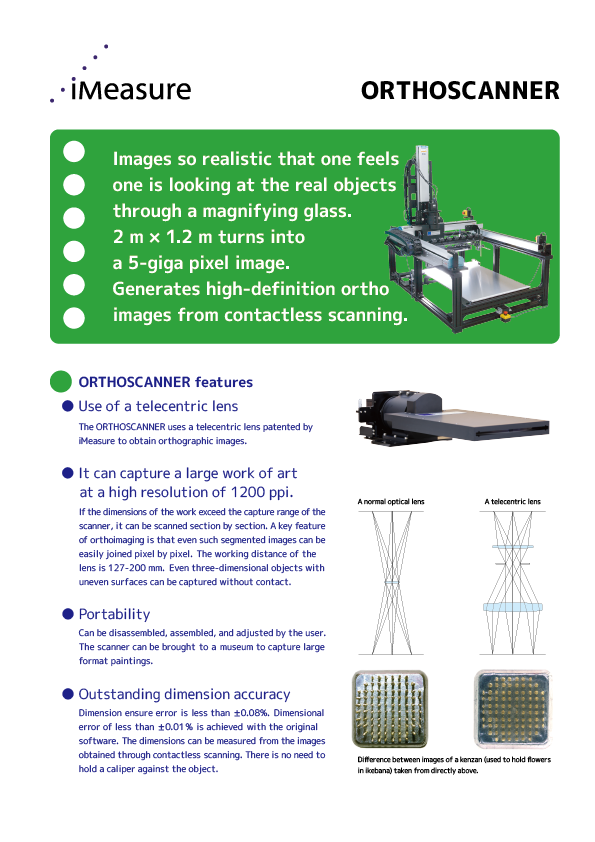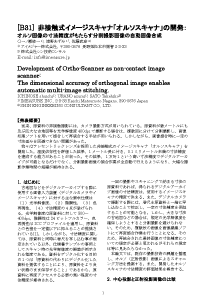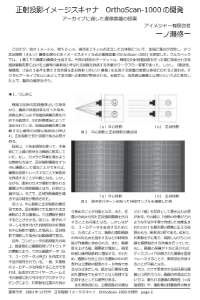PRODUCTLarge Sized Scanner with Gigapixel Quality
ORTHOSCANNER
ORTHOSCANNER

Images so realistic that one feels one is looking at the real objects through a magnifying glass.
2 m × 1.2 m turns into a 5-billion pixel image.
Generates high-definition ortho images from contactless scanning.
Application examples
| Creates detailed copies of buried cultural treasures such as earthenware and stone tools.
| Image input for converting raster to vector, such as aircraft drawings.
| Creates high-definition digital archives of the collections of art galleries and museums.
| Creation of high-definition replicas of watercolor paintings and oil paintings.
| Creates images of the texture of construction materials including stone, wood and fabric. ...etc.
SPECIFICATIONS
| Scan size | custom made Sample installation: W 60 × D 100 × H 20 cm : W 120 × D 200 × H 12 cm : W 180 × D 250 × H 20 cm |
|---|---|
| Optical resolution | 400 ppi / 600 ppi / 800 ppi / 1200 ppi (option) |
| Bit depth | RGB each 10 bit IN / 16 bit OUT |
| Tonal reproduction | Equipped with a shading correction function |
| Dimensional precision | Error does not exceed ±0.08% Error does not exceed ±0.01% when the original software is used. |
| Repetitive placement | Error does not exceed ±0.01% (800 ppi) |
| Image output | Ortho-photographic image 24-bit color / 48-bit color: TIFF format Files exceeding 4 GB: original RAW format |
| Light source | Bilateral irradiation using high color rendering white LEDs Changeable angle and intensity ratio |
| Imaging optics | Telecentric lens |
| Sensor | 4000 pixels / color line sensor |
| Scanning stage | AC servo-motor driven orthogonal triaxial stage |
| Software function | Layer scanning / Reduced size image output / Grayscale image output |
| Portability | Can be disassembled, transported, and reassembled. (option) |
| OS | Windows 10 / 11 ,64bit compatible |
*Note: This product is fundamentally custom-made. The specifications will be revised based on actual installations.
FEATURES
01Use of a telecentric lens.
The ORTHOSCANNER uses a telecentric lens patented by iMeasure to obtain orthographic images.
02It can capture a large work of art at a high resolution of 1200 ppi.
If the dimensions of the work exceed the capture range of the scanner, it can be scanned section by section. A key feature of orthoimaging is that even such segmented images can be easily joined pixel by pixel.The working distance of the lens is 127-200 mm.Even three-dimensional objects with uneven surfaces can be captured without contact.
03Color reproducibility ΔE < 1.
The white reference is sampled to automatically correct for uneven light intensity of the light sources, peripheral dimming of the lens, and variation in the sensitivity of the sensor pixels.
04Portability
Can be disassembled, assembled, and adjusted by the user. The scanner can be brought to a museum to capture large format paintings.
05Outstanding dimension accuracy.
Dimension ensure error is less than ±0.08%. Dimensional error of less than ±0.01% is achieved with the original software.
The dimensions can be measured from the images obtained through contactless scanning.
There is no need to hold a caliper against the object.
TELECENTRIC LENS FEATURES
Ortho-photography is a method of projecting images whereby images are obtained by projecting collimated light (parallel rays of light) from infinity. The projected image obtained through a telecentric lens in called an or thoimage.
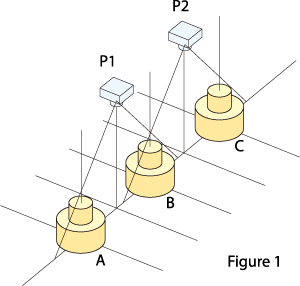
Three objects: A, B and C, are lined up to be photographed from above.
Figure 1 is a perspective view of how they are photographed.
Figure 2 is a cross-sectional view of photographing points P1 and P2 of a camera featuring a normal optical system, and surfaces of objects A, B and C.
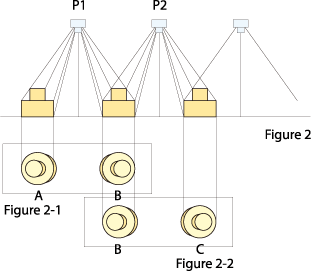
Figure 2-1 shows an image obtained using a normal optical lens with the camera placed at point P1. Figure 2-2 shows an image obtained with the camera placed at point P2.
As seen in both Figures 2-1 and 2-2, subject B appears distorted into an oblong shape at the end opposite to the optical center of the lens. To be more precise, the right side of subject B in Figure 2-1 appears elongated.
In a similar manner, in Figure 2-2 the left side of subject B appears elongated. Therefore, it would be impossible to create a single image by superposing subject B from Figures 2-1 and 2-2 without noticeable distortion.
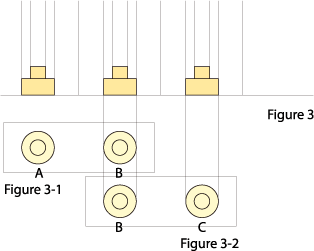
Then, Figure 3 shows a schematic cross-sectional diagram of the taking of an ortho-photographic image.
As before, an image is taken of subjects A and B from photographing point P1. The resultant image is shown in Figure 3-1. Similarly, an image is taken of subjects B and C and the result is shown in Figure 3-2. As both images are taken from directly above, subject B is the same shape in both Figures 3-1 and 3-2. Therefore, it is possible to superpose subject B from Figure 3-1 and Figure 3-2 to create a single image without distortion.
YouTube
-
ORTHOSCANNER
-
Features of the ORTHOSCANNER
-
Fine-Art-Scan, an orthoscanner-based scanning service
SAMPLE
-
High-resolution digital archive
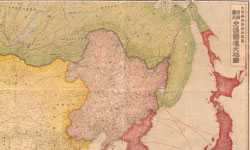
-
High-resolution scanning of art
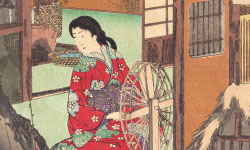
-
Image-based measurement and inspection
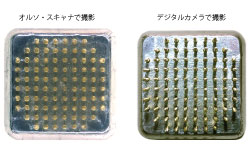
-
Survey map of buried cultural properties
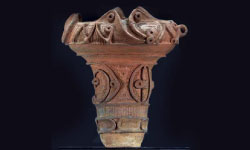
The ORTHOSCANNER produces high-resolution digital images without distortion or perspective. Therefore, it is possible to create an accurate life-size side view by simply tracing such an image.
-
White and infrared model
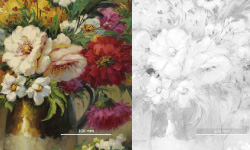
Full color (RGB) and infrared (IR) images can be captured with the one scanner.
DEVELOPER
Patented technology
ORTHOSCANNER is the patented technology of iMeasure Inc. and Shin Engineering Consultant Co., Ltd.
Patent-protected / Japan Patent Office: PAT NO. 4758773
Developer
iMeasure Inc.
[Joint Development Company]
Shin Engineering Consultant Co.,Ltd.(SIOS)
https://www.shin-eng.co.jp/
 ACCESS
ACCESS CONTACT US
CONTACT US